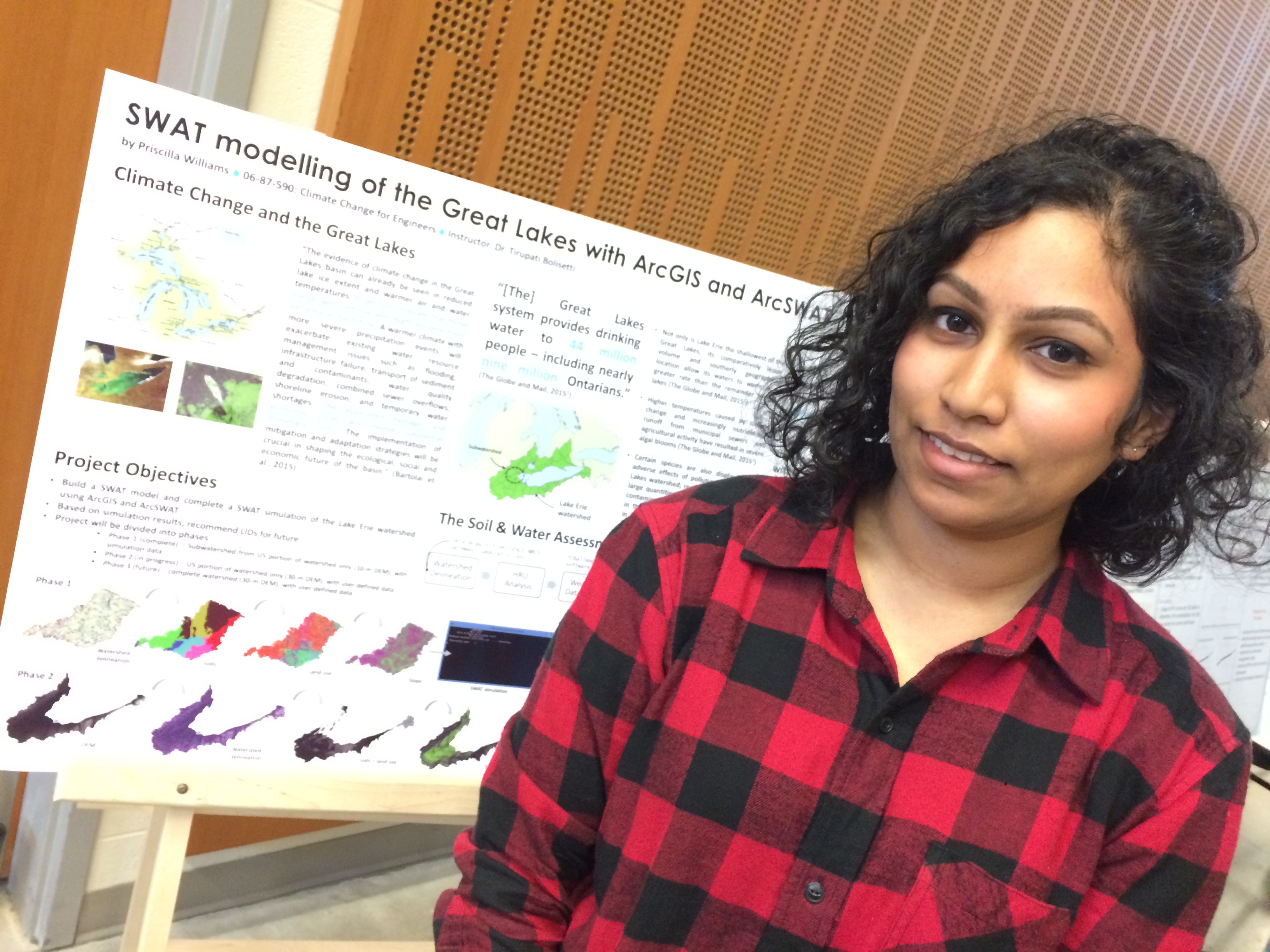
UWindsor engineering students are bracing for a wetter future created by climate change by examining and improving the design of local water systems.
More than 100 Civil and Environmental Engineering students gathered in the Centre for Engineering Innovation on March 22, 2016 — United Nation’s World Water Day — to present ideas that combat growing levels of precipitation scientists say is a result of climate change.
Since 1900, the average annual precipitation has increased by roughly five per cent in the U.S. and nearly two per cent worldwide, according to the U.S. Environmental Protection Agency (EPA).
“Most of us agree that precipitation intensities are increasing,” said Dr. Tirupati Bolisetti, an associate professor in civil and environmental engineering. “An increase in rainfall has a significant effect on water management systems.”
Dr. Bolisetti said he assigned this project to his fourth year hydrology students and graduate students taking his climate change adaption for engineers class to prepare them for real-world situations they may encounter in their professional careers.
As temperatures rise and the air becomes warmer, more moisture evaporates from land and water into the atmosphere leading to an increase in rain and snow, which can wreak havoc on water systems, said Bolisetti.
Students were tasked with assessing and mitigating climate change impacts on storm water management in select Windsor neighbourhoods, including the University of Windsor campus. One project suggested UWindsor’s Centre for Engineering Innovation could curb the impacts of excess water by utilizing retention ponds, disconnecting downspouts and using permeable pavements.
Priscilla Williams, a PhD candidate in civil and environmental engineering, used the Soil and Water Assessment Tool (SWAT) to examine watersheds and sediment and nutrient loading in Lake Erie. The SWAT model can help researchers predict long-term impacts in large basins and develop water management strategies.
“If we don’t do the research now, we can’t prepare,” Williams said. “Climate change is happening. The proof is there. We can already see the effects on Lake Erie.”
Williams said out of the Great Lakes, Lake Erie is the shallowest and its southerly location allows the water to warm faster than the others. This coupled with nutrient-rich runoff from municipal drains and agricultural activity has resulted in severe algal blooms that pose a risk to aquatic life and human health. Williams’s research will provide information about the future of flows and nutrients, and the location of potential problem areas.
In 1993, The United Nations General Assembly designated the 22nd of March as World Water Day to invite people worldwide to learn more about water related issues and take action to make a difference.
For more information, visit unwater.org/worldwaterday.
